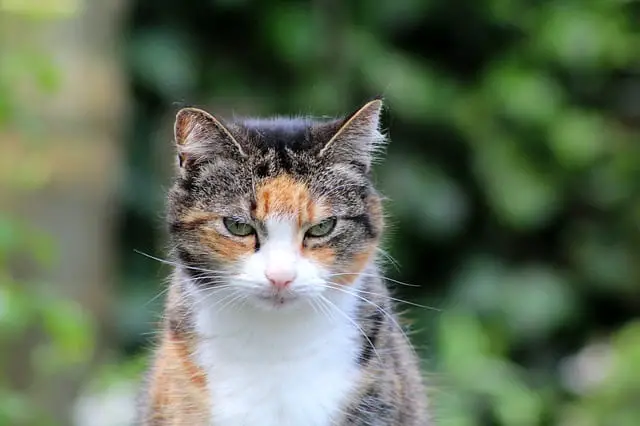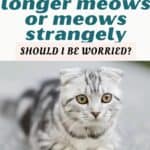
The old cat can not run or even jump anymore. What are the reasons for its rigidity and little elasticity? Let’s find out together.
The cat, like all living beings and the rest also man, tends to age over the years. Maybe the hair is less shiny and although it is true that its appearance changes very little, what makes the difference is its body. We would never want to see our cat grow old, because the difference, especially the physical-athletic one, is really huge.
Our feline over the years has accustomed us to shots, jumps, climbs and even acrobatic walks on the cornices. Today, however, that the old cat can no longer run or even jump, it no longer seems to be our unscrupulous cat of all time.
What can this apathy or physical difficulty depend on? What causes so much stiffness to the body of our furry friend? Let’s find out together in the next paragraphs.
The old cat can no longer run

First of all, you need to know your cat well in order to then establish if the changes in its habits are worrying or if you are simply not aware of the cat’s strange behaviors.
Having this type of information helps us to better understand if what has been observed in the animal is a cause for concern or vice versa. This is why it is necessary to observe the following habits, of the elderly cat in particular, in order to establish the degree of severity of the situation:
- activity level;
- gait;
- eating habits;
- social behaviour;
- habits for evacuations.
The most common signs that the elderly cat may experience are:
- lethargy;
- poor hygiene;
- tends to hide more often;
- urinating and/or defecating out of the litter;
- the cat becomes more aggressive.
These conditions just listed may be the most obvious signs that the animal has aged but very often these signals are only consequences of some pathology that manifests itself through them.
The old cat can no longer run: the diseases that can prevent it
The cat with the incessant advance of time, decreases more and more the ability to move with agility, as it has always done. But what are the diseases of the cat that can take over the years and how much can they affect the agility of our furry friend? Below is a list of the main diseases that affect the elderly cat that can no longer run:
- Arthritis in cats: Arthritis is just a disease that affects cats with the passage of time. Arthritis in cats is also known as osteoarthritis or degenerative joint pathology, it causes pain and inflammation in the cat’s joints. Most tends to affect the elbow joint, but does not exclude any of the joints. The elderly cat shows stiffness in movement, swelling of the cat’s joints, lethargy, lameness, decreased flexibility or discomfort when taken in the arms in certain positions. This is why the old cat can no longer run. The cause of all this is to be attributed to the cartilage, which when it is healthy forms a sort of pad between the bones and joints while with aging, it deteriorates and becomes less elastic.
- Respiratory problems: respiratory problems in the elderly cat are the order of the day, its breathlessness in walking, heavy breathing when sleeping, panting when climbing stairs, are all conditions due to respiratory problems that prevent among other things the elderly cat from no longer being able to run.
- Major traumas: the elderly cat is more prone to trauma, due to falls taken due to dizziness and not only is it also more prone to accidents. An elderly cat can suffer more or less minor trauma and may involve internal injuries or even head trauma.
- Blindness in the cat: the main causes of blindness in the elderly cat are: eye lesions; tumors that affect both the eye and the brain areas responsible for vision; cataracts; retinopathies. It is essential that any eye problems are treated in a timely manner, before it becomes aggravated and can impair vision altogether. But in any case old age will take its course, and the cat’s vision will decrease with time, denying him his best jumps and jerks.
- Loss of balance: In the elderly cat it can be the consequence of a stroke, or a neurological syndrome due to a mostly localized cerebral circulatory alteration. In this case the cat will suddenly lose its balance, it may begin to turn in circles on itself or even lose the ability to stand on its paws, let alone if in these conditions the elderly cat can run anymore.
- Paralysis in the elderly cat: it can be provoked by an obstruction of the blood vessels of the hind extremities (thromboembolism) and, in this case, it can be treated as a clinical disease. More frequently it is caused by road accidents.
- Tumor in the cat: Sometimes older cats develop tumors of the spine that, in most cases, are not surgically removable and result in paralysis of the animal.






